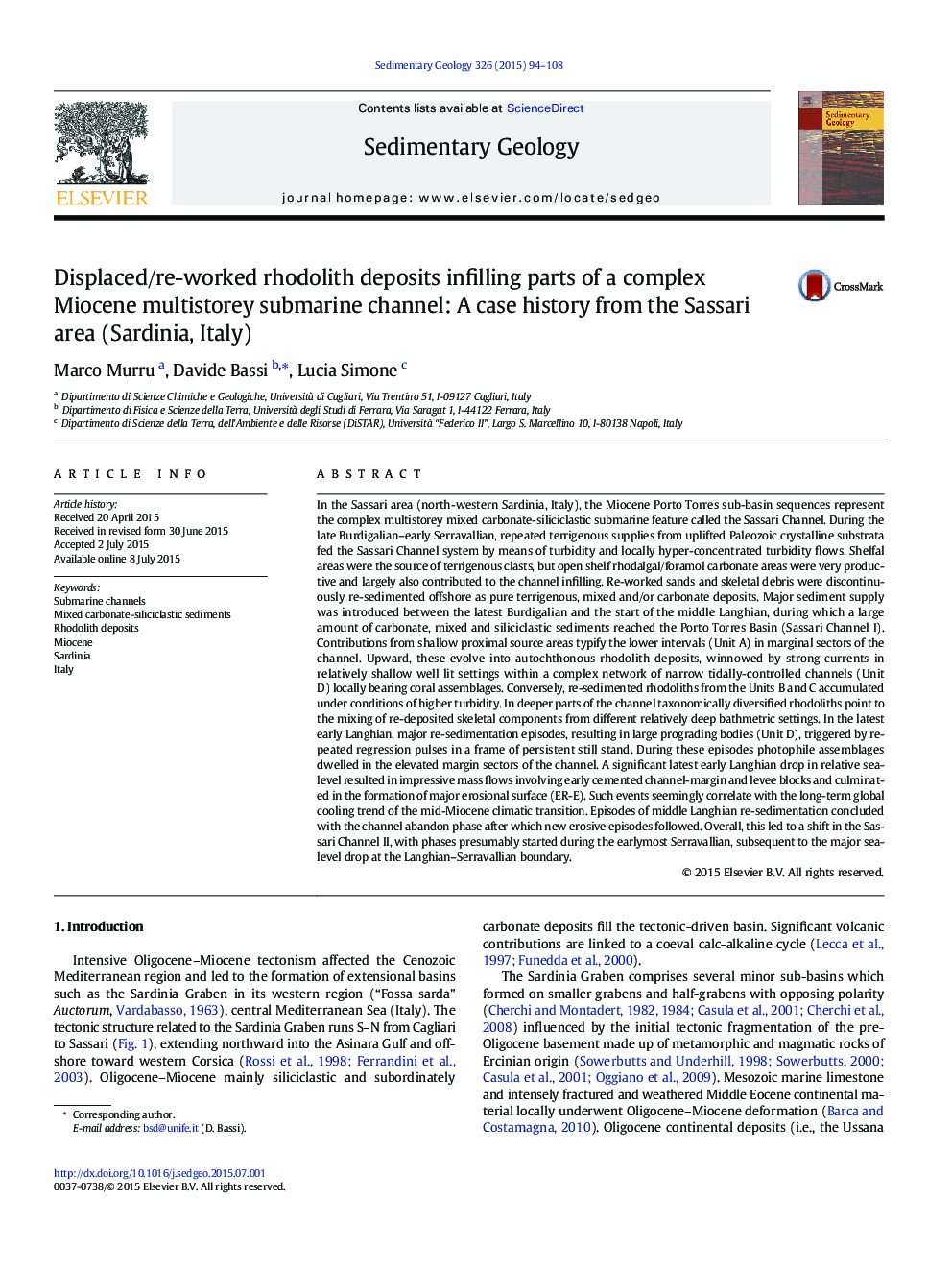| کد مقاله | کد نشریه | سال انتشار | مقاله انگلیسی | نسخه تمام متن |
|---|---|---|---|---|
| 4689203 | 1636037 | 2015 | 15 صفحه PDF | دانلود رایگان |
• We model the late Burdigalian–early Serravallian submarine Sassari Channel.
• We examine changes in repeated terrigenous and carbonate supplies.
• Major sedimentation episodes occurred in the latest Burdigalian–lower Langhian.
• Contributions from shallow rhodalgal open shelves typify the carbonate supplies.
• The MMCO corresponds to increasing development of rhodalgal carbonate production.
In the Sassari area (north-western Sardinia, Italy), the Miocene Porto Torres sub-basin sequences represent the complex multistorey mixed carbonate-siliciclastic submarine feature called the Sassari Channel. During the late Burdigalian–early Serravallian, repeated terrigenous supplies from uplifted Paleozoic crystalline substrata fed the Sassari Channel system by means of turbidity and locally hyper-concentrated turbidity flows. Shelfal areas were the source of terrigenous clasts, but open shelf rhodalgal/foramol carbonate areas were very productive and largely also contributed to the channel infilling. Re-worked sands and skeletal debris were discontinuously re-sedimented offshore as pure terrigenous, mixed and/or carbonate deposits. Major sediment supply was introduced between the latest Burdigalian and the start of the middle Langhian, during which a large amount of carbonate, mixed and siliciclastic sediments reached the Porto Torres Basin (Sassari Channel I). Contributions from shallow proximal source areas typify the lower intervals (Unit A) in marginal sectors of the channel. Upward, these evolve into autochthonous rhodolith deposits, winnowed by strong currents in relatively shallow well lit settings within a complex network of narrow tidally-controlled channels (Unit D) locally bearing coral assemblages. Conversely, re-sedimented rhodoliths from the Units B and C accumulated under conditions of higher turbidity. In deeper parts of the channel taxonomically diversified rhodoliths point to the mixing of re-deposited skeletal components from different relatively deep bathmetric settings. In the latest early Langhian, major re-sedimentation episodes, resulting in large prograding bodies (Unit D), triggered by repeated regression pulses in a frame of persistent still stand. During these episodes photophile assemblages dwelled in the elevated margin sectors of the channel. A significant latest early Langhian drop in relative sea-level resulted in impressive mass flows involving early cemented channel-margin and levee blocks and culminated in the formation of major erosional surface (ER-E). Such events seemingly correlate with the long-term global cooling trend of the mid-Miocene climatic transition. Episodes of middle Langhian re-sedimentation concluded with the channel abandon phase after which new erosive episodes followed. Overall, this led to a shift in the Sassari Channel II, with phases presumably started during the earlymost Serravallian, subsequent to the major sea-level drop at the Langhian–Serravallian boundary.
Journal: Sedimentary Geology - Volume 326, 1 August 2015, Pages 94–108
